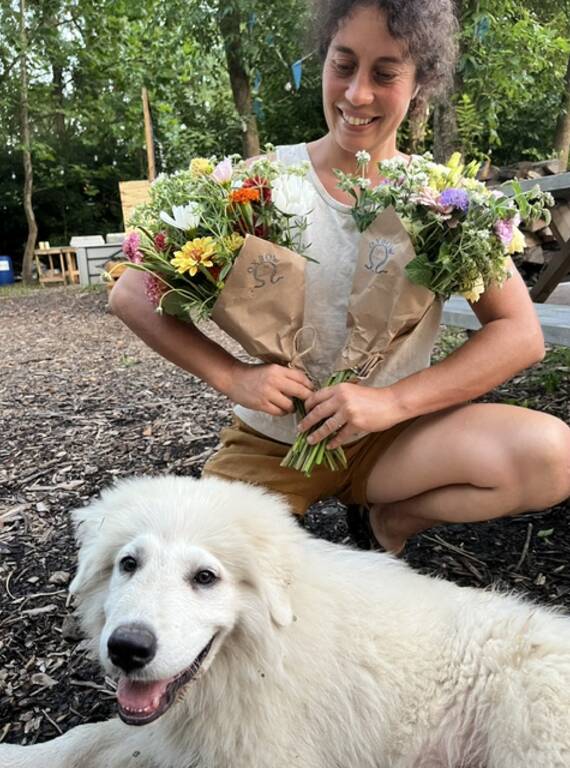This land’s unlikely victory proves that national parks can evolve into centers of community, agriculture and environmental justice.
Tucked between the Ohio cities of Cleveland and Akron lies a lush, winding valley that defied the odds. Once a symbol of industrial decline and polluted waterways, the area now home to Cuyahoga Valley National Park stands as an innovative testament to what’s possible when nature, people and vision align.
Designated as a national recreation area in 1974, Cuyahoga Valley gained national park status in 2000. “But its roots stretch back to the mid-1800s, when people first started seeing this valley as valuable for recreation,” said Pamela Barnes, community engagement supervisor and longtime ranger at the park. “Of course, the catalyzing moment for the American environmental movement was the Cuyahoga River fire in 1969. It caught the world’s attention.”
The catastrophic fire led to protests from locals, who worried about the environmental and health implications of having a polluted river in their community. This courageous grassroots advocacy kickstarted more than its participants could have imagined: formation of the Environmental Protection Agency, the Parks to the People Campaign (a movement that advocated for easy access to public lands for all people), and the restoration of what is now Cuyahoga Valley National Park.
The park is celebrating its 50th anniversary through 2025 — a milestone of restoration, resilience and reimagining.
With over 33,000 acres of forests, waterfalls, wetlands and meadows, this park isn’t just a beautiful place. It’s a working landscape where past, present and future overlap and where the continued health of the land and the people who live nearby guide every decision. “Cuyahoga Valley National Park offers a picture of what can be, when people work together,” Barnes said.
Here’s how to experience this triumph of conservation for yourself.
1. Take to the trails
The best way to connect with the valley is on its 125 miles of hiking trails, where you can get a close-up view of an active restoration project.
Don’t miss the Ledges Trail, a 2.2-mile loop among massive sandstone cliffs and moss-covered boulders. Leave time to explore: You’ll want to poke around in the cracks and crevices, locate the mysterious rock carvings, and admire the cool whoosh of air from the Icebox Cave.
Or try the iconic Brandywine Gorge Trail, a 1.5-mile loop to a 65-foot cascade with a boardwalk that takes you close enough to feel the mist on your face and hear the roar in your ears.
For a conservation deep-dive, walk, run or bike the Towpath Trail on the Ohio and Erie Canals. This paved path is on the same route that mules walked to tow canal boats loaded with goods and passengers. Spanning more than 20 miles within the park, the trail has historical markers that bring to life the park’s transformation from industrial no-man’s-land to lush national park. Watch for once-functional canal locks and wildlife, like beavers, river otters and great blue herons.
2. Explore by train
The Cuyahoga Valley Scenic Railroad — one of the few operating within a national park — offers views of restored riverbanks and wildlife corridors, many of which are hidden from roads. But it’s more than a scenic ride. The railroad is part of a low-impact access strategy that supports both education and conservation.
“Our goal is to connect this train all the way to downtown Cleveland,” said Donté Gibbs, vice president of community partnerships at The Conservancy for Cuyahoga Valley National Park. “It’s another way to actualize the ‘Parks to the People’ initiative.”
Consider taking advantage of the Explorer Program, which lets you bring a bike or kayak onboard, hop off for adventure, then reboard for a relaxing ride back.
3. Enjoy hyper-local produce
Cuyahoga Valley is home to eight working farms, part of the pioneering Countryside Initiative, in which the park leases land to farmers practicing sustainable, regenerative agriculture. The ongoing project preserves the valley’s agricultural roots and connects visitors to local food.

You-pick flowers at Oxbow Orchards, one of eight working farms at Cuyahoga Valley National Park.
Courtesy of Oxbow Orchards“We’re a working farm, but we also have lots of opportunities to invite the public in for concerts and events,” explained Kyla Werlin, who farms Oxbow Orchards with her partner, Beth Lomske. “They get to see things like rotational grazing and composting firsthand, and it really brings the idea of local food to life.” Oxbow Orchards nurtures fruit trees, Icelandic sheep and a you-pick flower patch, among other offerings, all of which are available at their farm store.
Experience sustainable viticulture at Sarah’s Vineyard (grab a wood-fired pizza while you’re there) or meet the pasture-raised goats at Goatfeathers Point Farm. Snag some produce at Szalay’s Farm Stand or the Market on the Meadow and be a small part of the park’s larger vision: that food systems can nourish people and the planet.
4. Connect with the park’s past
This land was long ago home to the Lenape (Delaware), Shawnee and other Indigenous peoples who lived in balance with the valley’s rivers, forests and wildlife. Later, it was carved by settlers and shaped by the industrial era — mostly to the land’s detriment.
Today, Cuyahoga Valley National Park is actively reimagining its relationship to that past. The Canal Exploration Center shares the story of the Ohio & Erie Canal, but it also invites visitors to consider the ecological consequences of the canal system and the industries it supported.
Interpretation across the park is evolving to amplify underrepresented voices. Gibbs points especially to the newly purchased Brandywine Golf Course, which is being remediated for parkland. “On that property used to be a Black jazz club called the Drift Inn,” Gibbs said. ‘It was in the Green Book as a place where people could feel safe and have a good time. We don’t want to lose that history.”
To imagine the past here is not to romanticize it, but to understand what was lost — and what can be restored with care, science and humility.
5. Celebrate 50 years
In 2025, Cuyahoga Valley National Park turns 50, a milestone of not just age, but also effort. Every trail built, every acre reforested, every species returned is the result of decades of coordinated conservation. “It was a collaborative effort,” Barnes explained, with the federal government, local communities and engaged citizens working together to build the park we enjoy today.
Festivities will include a photography exhibit at the Akron Art Museum, a commissioned piece performed by the Cleveland Philharmonic at Blossom, a music venue within the park, and plenty of smaller happenings visitors can take part in.
But the celebration is as much about looking forward as it is about honoring the past. The park’s leadership is embracing the future with efforts to make the park more resilient to rising temperatures, increased rainfall, stronger storms and invasive species that can harm ecosystems and cultural resources. Habitat restoration is underway in parts of the park, and more inclusive programming welcomes all visitors.
As it turns 50, the park invites us all to imagine what the next 50 years could hold.
Stay On Top of News
Our email newsletter shares the latest on parks.
About the author
-
 Susanna Klingenberg Contributor
Susanna Klingenberg ContributorSusanna Klingenberg is a freelance writer and editor based in Raleigh, North Carolina. She loves exploring outdoors, whether it's in her unruly vegetable garden or in the national parks.